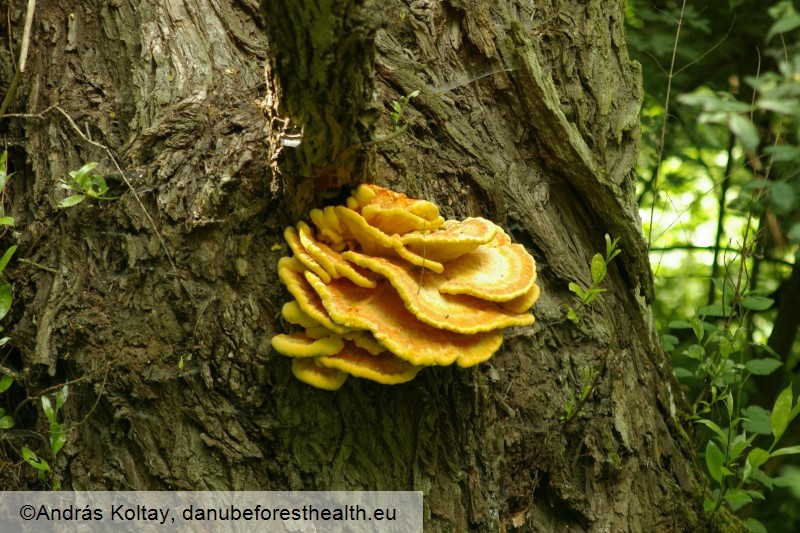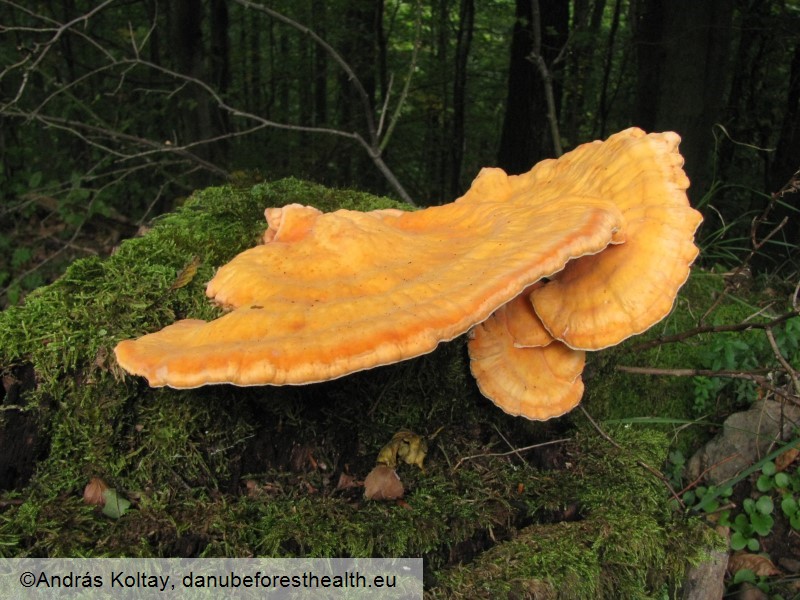Fungi
Sulphur polypore
Laetiporus sulphureus
Nikica Ogris, Thomas Cech
|
|

Fig. 1. Young fruiting bodies of Laetiporus sulphureus on poplar tree

Fig. 2. Mature fruiting bodies
DETECTION PERIOD:
May to December
DESCRIPTION:
The fruiting body emerges directly from the trunk of a tree and is initially knob-shaped, but soon expands to fan-shaped shelves, typically growing in overlapping tiles (Fig. 1). The brackets are soft, orange-yellow above and sulphur-yellow below, sometimes with droplets emerging from the pores. Old fruitbodies fade to tan or whitish. Each shelf may measure from 15 to 60 cm in diameter and be up to 4 cm thick. The fertile surface is sulphur-yellow with small pores (2-4/mm) and produces a white spore print. When fresh, the flesh is succulent with a strong fungal aroma and exudes a yellowish, transparent juice, but soon becomes dry and brittle.
HABITAT:
It grows on dead or mature hardwoods and has been reported from a very wide variety of host trees, such as Quercus, Robinia, Prunus, Pyrus, Populus, Salix, and Fagus, occasionally also from conifers.
STATUS:
Laetiporus sulphureus is widely distributed across Europe and North America.
IMPACT:
The fungus causes brown cubical rot of heartwood in roots, tree base and stem. After infection, the wood is at first discoloured yellowish to red, but subsequently becomes reddish-brown and brittle. At the final stages of decay, the wood can be rubbed like powder between the fingers. At the same time, the mycelium grows along the fissures which develop in the wood, lining them with broad, ribbon-like, yellowish strips. The sapwood is usually affected later on thus additionally reducing the tree stability.
SIMILAR SPECIES:
A somewhat similar is Sarcodontia spumea, which is fibrous or more or less hairy on the surface and grows on living or dead wood of deciduous trees, with whitish and crumbly flesh. Similar is also Climacocystis borealis, which whitish or granular yellow velvet brackets, light, double-layered, the lower layer being very hard. It grows mainly on living or dead wood of conifers, especially at higher elevations. However, both species never reach the size of L. sulphureus.
|